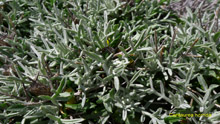

This is very similar to what happens when two isolated systems are coupled, like two hydrogen atomic orbitals coming together to form the bonding and antibonding orbitals of the hydrogen molecule, which are hybridized super-modes of the total coupled system. When individual photonic atoms are brought into close proximity, their optical modes interact and give rise to a spectrum of hybridized super-modes of photonic molecules. Taking this analogy even further, a cluster of several mutually-coupled photonic atoms forms a photonic molecule. Owing to this similarity, optical microcavities can be termed ‘photonic atoms’. The properties of quantized confined photon states in optical micro- and nanocavities are very similar to those of confined electron states in atoms. The term photonic molecule has been also used since 1998 for an unrelated phenomenon involving electromagnetically-interacting optical microcavities. Interacting optical cavities as photonic molecules It may be possible to arrange the photonic molecules in such a way within the medium that they form larger two-dimensional structures (similar to drawings). The system could also be useful in classical computing, given the much-lower power required to manipulate photons than electrons. The interaction of the photons suggests that the effect could be employed to build a system that can preserve quantum information, and process it using quantum logic operations. This photonic interaction is mediated by the electromagnetic interaction between photons and atoms. In effect the two photons push and pull each other through the cloud as their energy is passed from one atom to the next, forcing them to interact. In this case, as two photons enter the atomic cloud, the first excites an atom, annihilating itself in the interaction, but the transmitted energy must move forward inside the excited atom before the second photon can excite nearby atoms. The effect is caused by a so-called Rydberg blockade, which, in the presence of one excited atom, prevents nearby atoms from being excited to the same degree. Eventually the photons exited the cloud together as normal photons (often entangled in pairs). This caused the photons to behave as massive particles with strong mutual attraction (photon molecules). Inside the cloud medium, the photons dispersively coupled to strongly interacting atoms in highly excited Rydberg states. Īs the photons entered the cloud, their energy excited atoms along their path, causing them to lose speed.
Using weak laser pulses, small numbers of photons were fired into the cloud. The cloud was cooled using lasers to just a few degrees above absolute zero.

Gaseous rubidium atoms were pumped into a vacuum chamber.


 0 kommentar(er)
0 kommentar(er)
